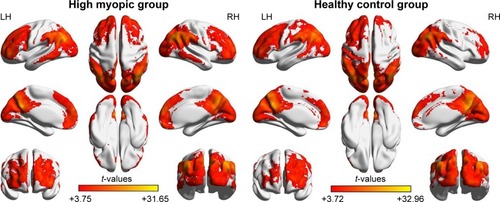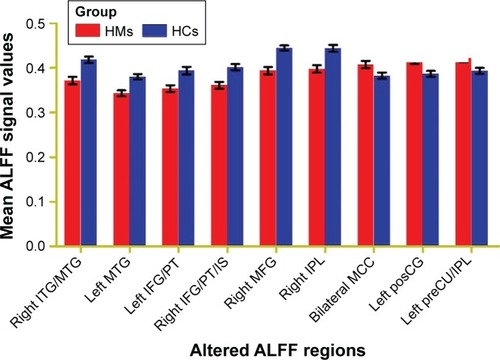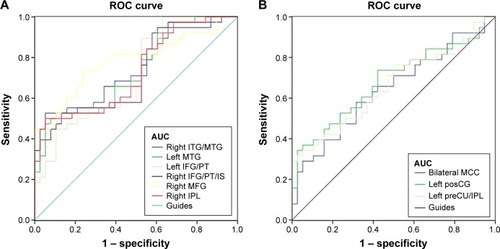Figures & data
Table 1 Demographics and clinical measurements by group
Figure 1 One-sample t-test results. Within-group ALFF maps within the HM (left) and HC (right) groups (P<0.001, FDR corrected).

Figure 2 Spontaneous brain activity in the monocular blindness and healthy control groups.
Abbreviations: ALFF, amplitude of low-frequency fluctuation; GRF, Gaussian random field; L, left; LH, left hemisphere; R, right; RH, right hemisphere.

Figure 3 The mean values of altered ALFF values between the HM and HC groups.

Table 2 Brain areas with significantly different ALFF values between the groups
Figure 4 ROC curve analysis of the mean ALFF values for altered brain regions.
Abbreviations: ALFF, amplitude of low-frequency fluctuation; AUC, area under the curve; CI, confidence interval; HCs, healthy controls; HM, high myopia; IFG, inferior frontal gyrus; IPL, inferior parietal lobule; IS, insula; ITG, inferior temporal gyrus; MCC, midcingulate cortex; MFG, middle frontal gyrus; MTG, middle temporal gyrus; posCG, postcentral gyrus; preCU, precuneus; PT, putamen; ROC, receiver operating characteristic.

